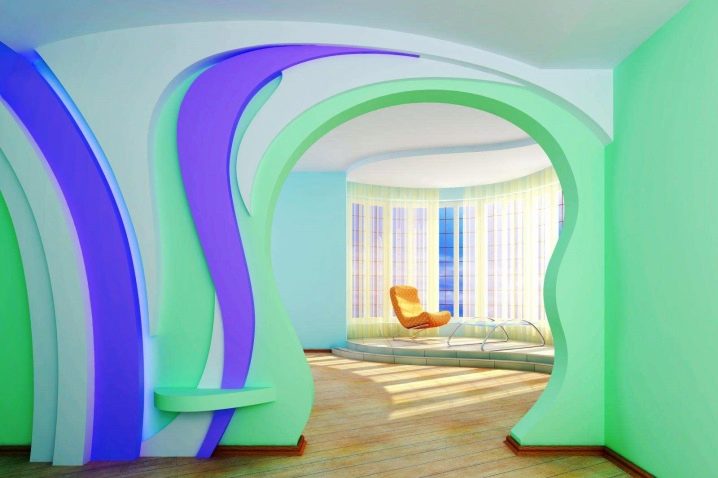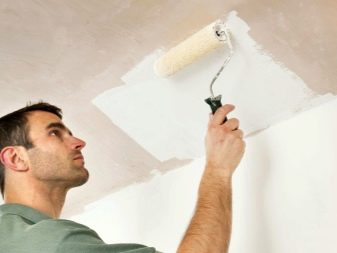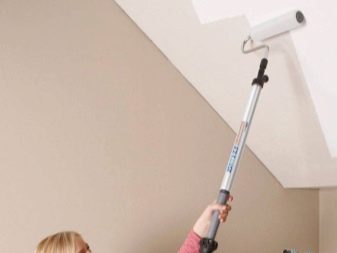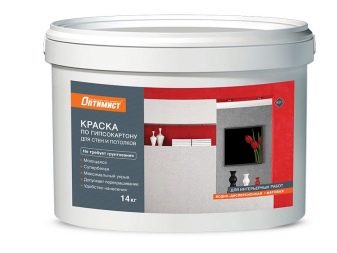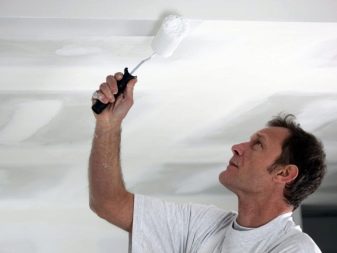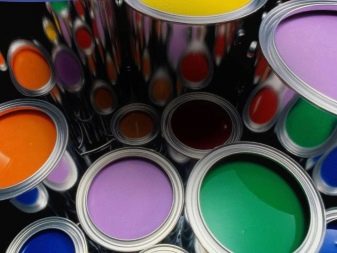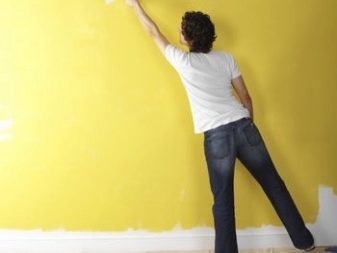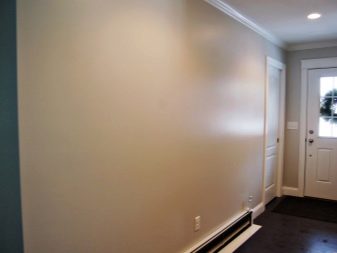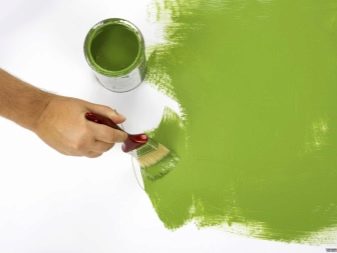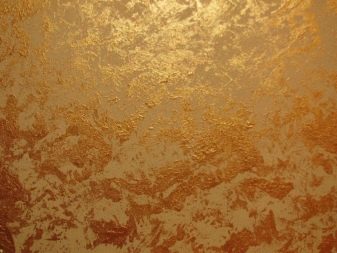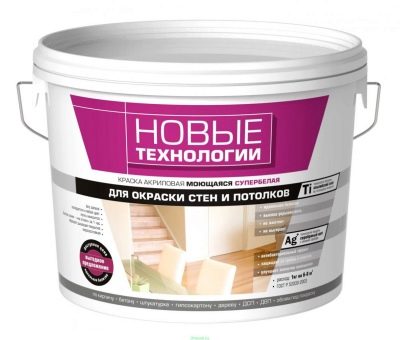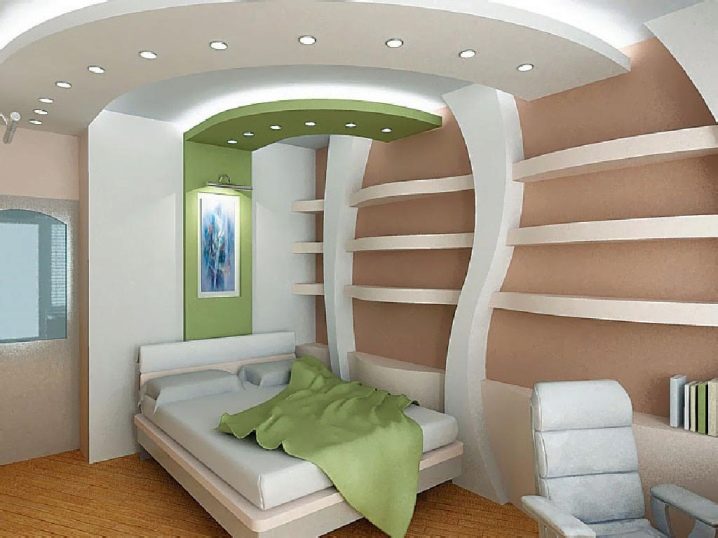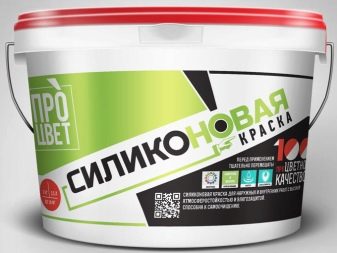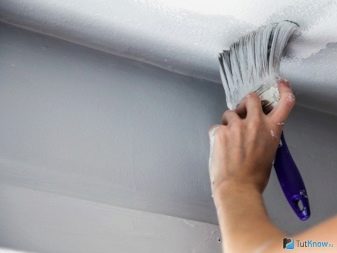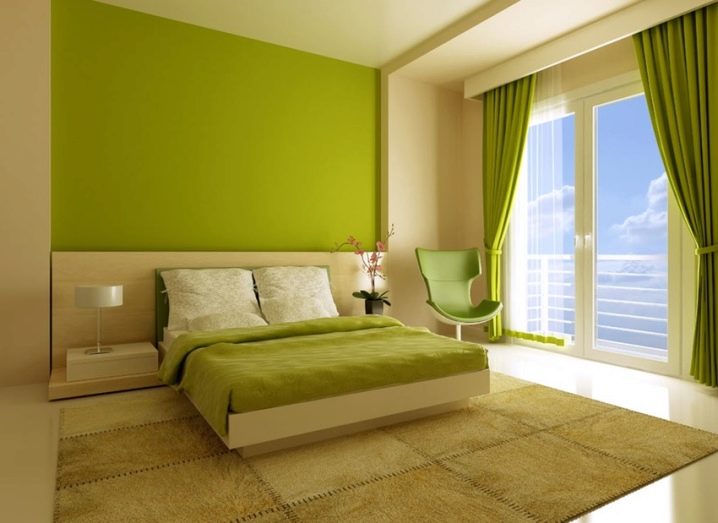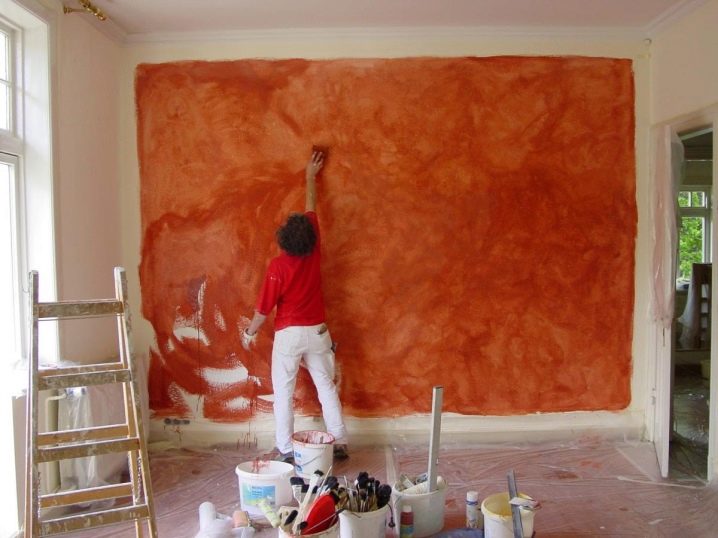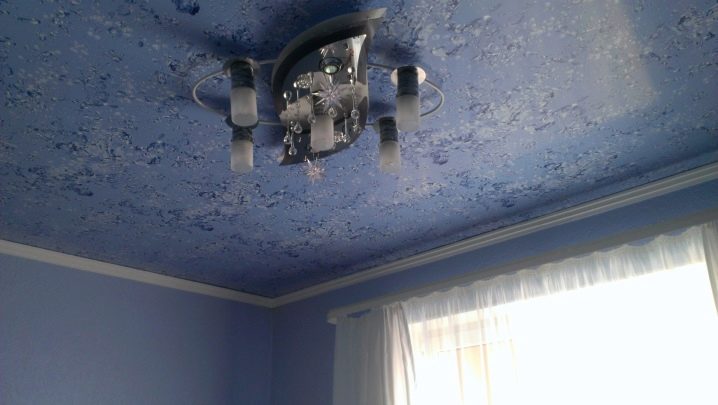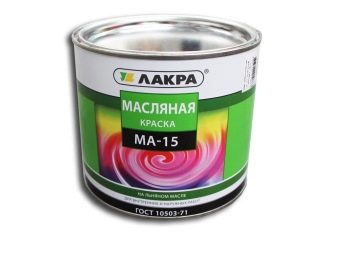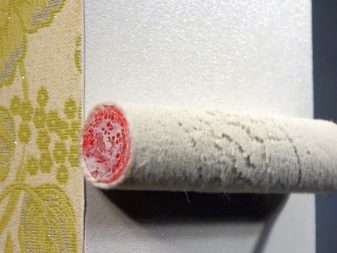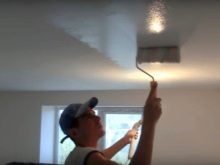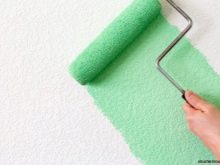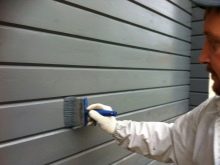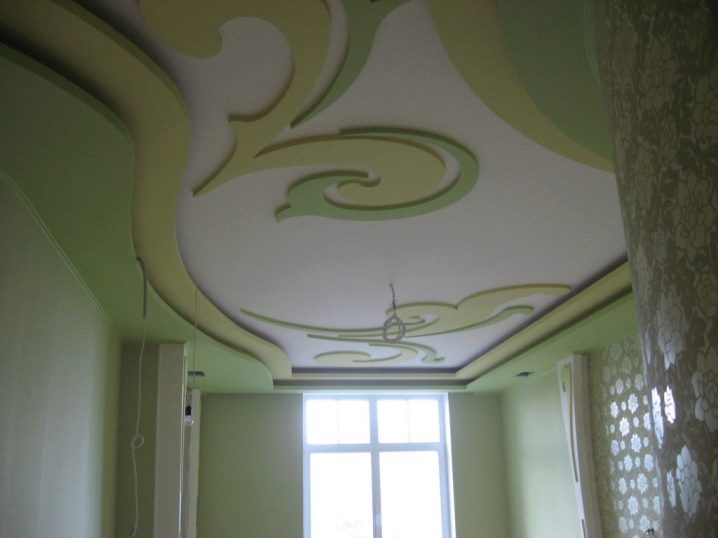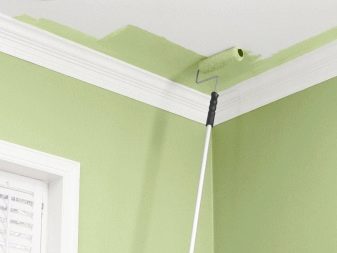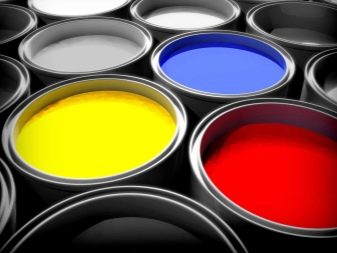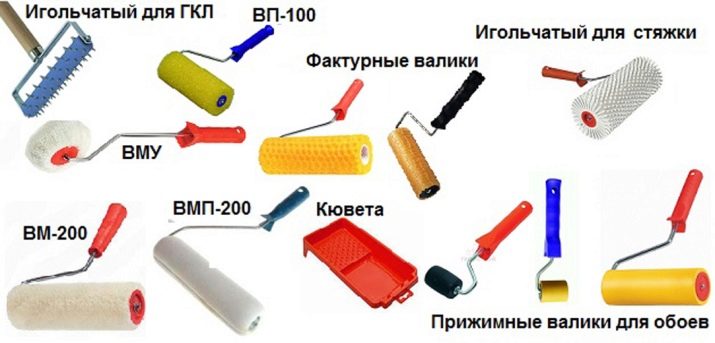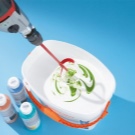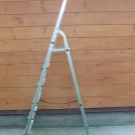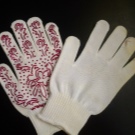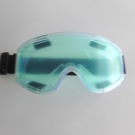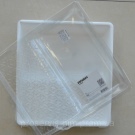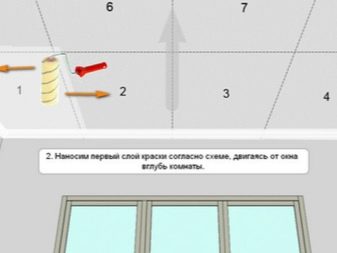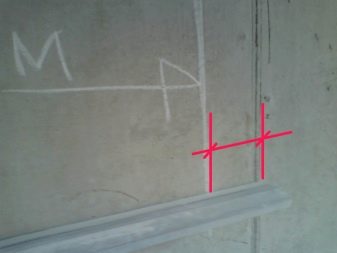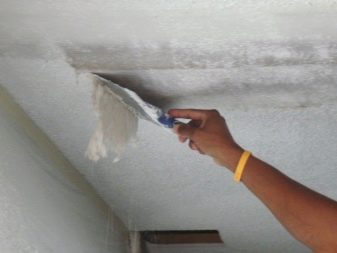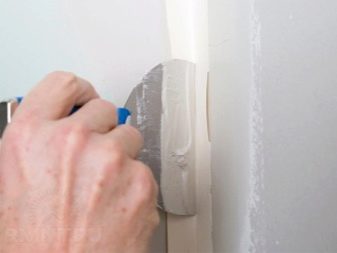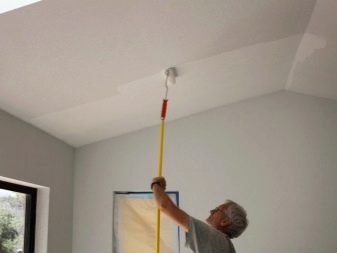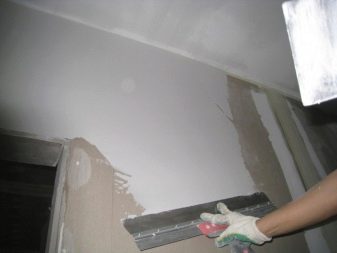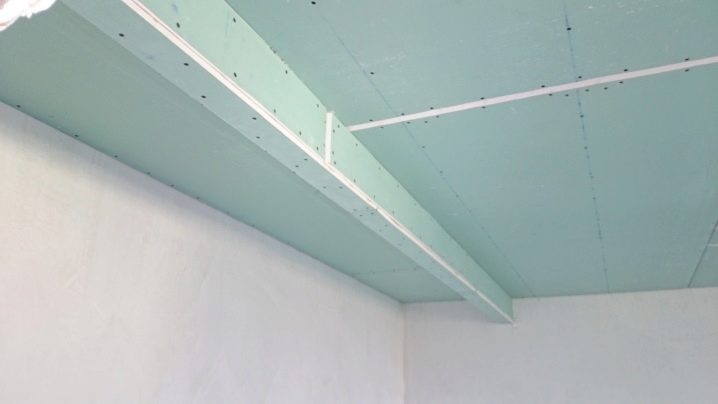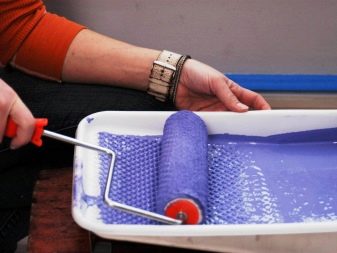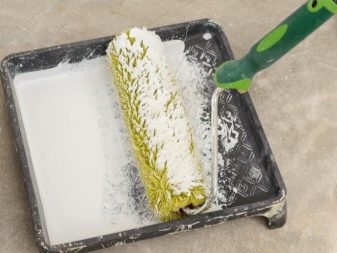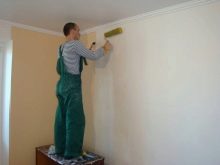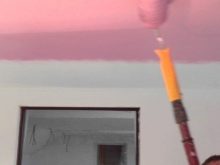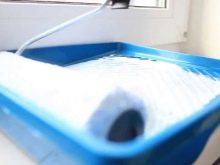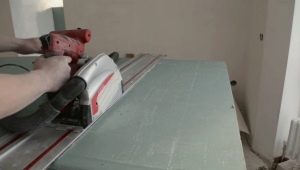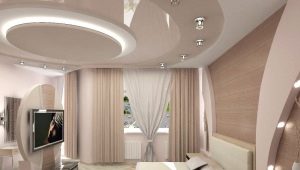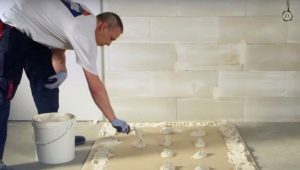Painting drywall: paint selection and order of work
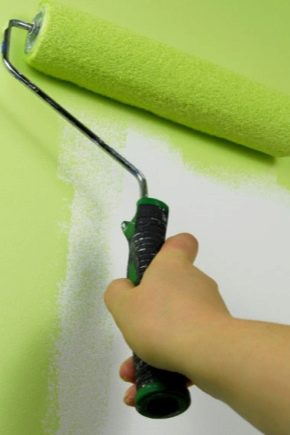
Drywall is a popular material that is used for different purposes: it can be used to align floors, to build partitions and arches, as well as to make furniture. GCR sheets are good because they are easy to handle. In order for the coating to look appropriate, it is necessary to apply a paint coating.
The benefits of painting
Today in shops many kinds of paints and varnishes are on sale. They differ from each other not only in shades, but in composition as well as in performance characteristics.
Each consumer can choose the appropriate composition, which harmoniously fit into his home.In addition, painting as a drywall finish Many people choose because of the large number of other positive qualities:
- Any paint easily and without problems lays on sheets of drywall. To paint this material does not take much time, effort and money.
- Due to the wide range, you can finish drywall paint with absolutely any shade and texture paint.
- GKL-sheets can be painted repeatedly, if necessary.
- As a result of high-quality finishing works, the plasterboard base will acquire a more expensive and aesthetic look.
Of course, in order to achieve good results, it will be necessary to prepare a plasterboard base. After that, the paintwork will fall on him better and will be held more securely.
Selection and calculation of paintwork materials
Drywall can be covered in different colors. Below are the most popular options for paintwork materials.
Water emulsion
For finishing drywall most often used water-dispersion compositions (or water-based). Such paints consist of a binder base and coloring pigments diluted with an aqueous medium.
Water-based paints are in great demand. They are characterized by the following positive qualities:
- this paint is environmentally friendly and safe for human health;
- even after many years, water-based paints do not peel off from the bases, while maintaining an attractive appearance;
- no cracks remain on the dried water-based coating;
- these paints are applied quickly and easily - they can even be used in bathrooms;
- the complete drying of the composition takes little time;
- water-based paint can be absolutely any shade.
The main varieties of water-based paints are:
- acrylic;
- silicone;
- silicate;
- mineral.
Acrylic
The main component of acrylic paints are acrylic resins. Such mixtures are easily applied not only to plasterboard sheets, but also to brick, concrete, glass and wood. However, acrylic paints are not cheap, so consumers often refuse to buy them in favor of more affordable products.
It should be borne in mind that acrylic paints are not afraid of high temperatures.
Under their influence, such coatings do not lose their properties and original appearance.In addition, acrylic paints can boast a long service life, during which they do not fade or become covered with cracks. The aggressive rays of the ultraviolet are not afraid of such paintwork, and under their influence the paint will not turn yellow and will not lose its former saturation.
Silicone
Silicone paints are equally popular and in demand. They are also not afraid of sunlight, are highly durable and do not fear high temperatures. Most buyers choose silicone compounds, as they are suitable for almost any reason. On drywall, these mixtures fall as well as possible.
In addition, silicone paints have a high degree of elasticity. Due to this feature, such finishing materials can hide some defects on the bases, for example, small cracks or scratches. Also, silicone mixtures are alkali resistant.
Silicate
Silicate paints are no less reliable and durable - they are used for both interior and exterior. Such mixtures are great for drywall,moreover, it can be pre-filled with plaster or covered with plaster - silicate paint without any problems will lie on such bases.
Mineral
For repair work, they often acquire mineral paint. Such products are distinguished by good vapor permeability. Thanks to this important quality, a fungus and mold does not appear on the trimmed base, as it becomes “breathing”.
In addition, mineral paints do not incorporate aggressive chemicals and harmful compounds.
Oily
Modern oil paints are one of the varieties of mineral compounds. They can also be used to finish plaster bases. However, it should be borne in mind that applying such a mixture is more difficult than painting the basics with water-based structures, and it takes a long time to dry this finish.
Before applying the oil paint, it is necessary to prepare the plasterboard plane as thoroughly and accurately as possible. Also, it should be taken into account that it will be problematic to apply any other decorative materials on such a basis in the future - only those will adhere to the oil surface.mixtures that have a similar composition.
The main advantages of oil formulations are:
- environmental friendliness;
- strength and durability;
- affordable price;
- not subject to mechanical damage;
- possibility of use for both indoor and outdoor decoration.
Before buying a suitable paintwork, you should correctly calculate their required volume.
First you need to determine exactly what paint you want to buy for drywall. To calculate how much ink mixture will be needed for finishing, it is necessary to know the parameters of the gypsum base - length, width, height.
In addition, many manufacturers indicate the average consumption of paint in its original packaging - most often it is 1 kg of the mixture per 5 square meters. But it is worth being attentive - there are a lot of products sold in stores, differing by not the most democratic consumption, which exceeds the figures indicated on the box. To do this, and you need to know in advance the area that you want to finish.
Tools and methods of application
If you decide to paint the plasterboard foundations in your home yourself, then you should buy the following tools and fixtures in a specialized shop:
- clean tank as a paint bath;
- roller and brushes (small pile is more suitable for paint with a glossy texture, medium - for matte, and a long version can be used to give a certain texture to the layer);
- mesh;
- suitable paint composition;
- construction mixer with a special nozzle;
- step-ladder (especially if you want to design a ceiling);
- protective devices: goggles and gloves.
As a rule, the paint is applied on drywall substrates with preliminary preparation and marking - only after that you can proceed directly to the painting of the bases. However, this method of applying a finishing material is not completed. At the very end you need to close all the joints, as well as make the final touches. Only in this case, the finishing GKL-sheets will look neat and attractive.
Surface preparation
Before proceeding to the painting of plasterboard bases, they must be well prepared.
To do this, you need to perform the following steps:
- First, the surface of the drywall should be cleaned of dirt and dust - it should be perfectly clean;
- after that, the base must be treated with a quality primer;
- It is recommended to completely putty GKL-sheets before painting (if we neglect this stage of work, then the paint consumption can significantly increase);
- it is necessary to fill the joints with the serpyanka between the gypsum boards (you should not forget to putty the caps of the self-tapping screws, screwed into the plasterboard sheets) using a putty;
- after that you need to wait until the putty dries completely;
- then you need to clean all the irregularities that are present on the surface of the base (such defects often remain after solidification of the solution);
- the base should be cleaned until it is completely flat and smooth;
- then you need to walk on the base of the primer once again (experts recommend applying the primer in several layers - this will ensure optimal uniform penetration of paint into the inside of the material).
Do not neglect the above stages of finishing works - otherwise the paint may lie unevenly and serve for not so long. If all the work was done correctly, then the result should be a neat and completely filled with an even layer of primer.
Markup
Layout is not always required for plasterboard foundations. It is recommended to apply to it in the event that it is not planned to trim the base with one color. No marking is indispensable if it is necessary to apply color drawings or original patterns on gypsum bases.
To do this, the base must be divided into separate sections, which will later be used to apply paint of different shades. On the surface of the gypsum base to draw thin lines with a special construction pencil. Now the outer zone of the side that will be painted first is “fenced off” by a strip of glued adhesive tape.
As soon as one of the areas is completely painted and dries until the end, the masking tape can be applied to its edge and start painting the rest of the surface.
Painting
Painting drywall is quite possible to make their own hands. The technology of applying paintwork materials in this case is quite simple and understandable.
The following is the order of these finishing works:
- Any paint should be applied to the drywall in several layers.
- Paint and varnish solution should be poured into a clean bath in which it will be convenient to lower the roller.
- Through the first applied layer will be noticeable putty and any areas that differ in their color. Subsequent layers of paint will hide these flaws.
- It is recommended to use a brush first. She needs to trim the entire perimeter of the area that you want to paint first.
- It is necessary to take a bath of paint and completely lower the roller into it. When the finishing material on the tool is finished, it should be lowered with one side into the dish, rolling further along the inclined part.
- After that, you can proceed to the finishing of the main area of the drywall base. Roller should be rolled with paint on one surface 3-4 times. Be sure to do it in one direction.
- If the base is large, then it can be trimmed, making perpendicular movements. The width of the strips in this case should be 60-80 cm. Care should be taken to ensure that no smudges remain on the base.
- Then you need to walk on the basis of the roller again to distribute the paint. If she began to dry, then do not paint these places.
- Apply a second coat of paint.
- When it dries, you need to apply the third layer. A new strip of paint should overlap the previous 15 cm.
- Unpainted areas can only be modified after the paint has completely dried. Then you need to remove all auxiliary parts and cover the joints of floor slabs with plinths.
Useful tips
- When painting drywall, it is recommended to use a pile rather than a foam roller.
- Before applying the next coloring layer, you must make sure that the previous layer is completely dry.
- Places where you plan to install outlets or lamps, should be painted over with a brush, and not with a roller - so it will be neater.
- If you are painting plasterboard walls, then the process must be carried out from the ceiling to the floor, so that there are not a lot of smudges.
- It is necessary to mix the paint well before applying to the GCR sheets. If its consistency is too thick, then, for example, the emulsion composition can be diluted with water, and the enamel with a solvent.
- For priming plasterboard is recommended to use high-quality acrylic primer.
Tips for painting drywall - in the next video.
